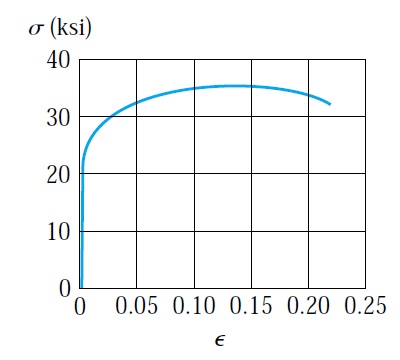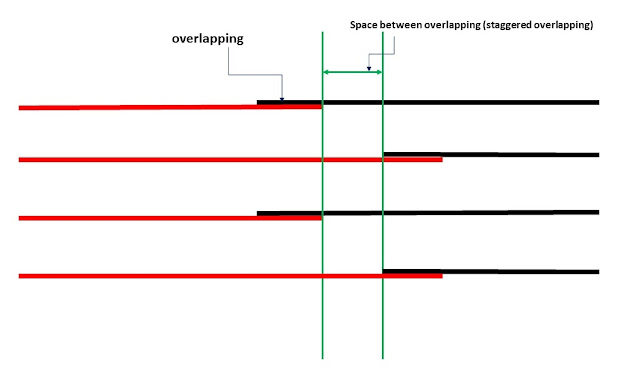Corrosion inhibitor
Corrosion of reinforcement steel in concrete structure is one of the significant threats that can weaken and reduce the durability of concrete structures. Concrete structures located in an aggressive environment such as coastal environment are more vulnerable to corrosion. Corrosion will adversely affect the reinforcement steel. Corrosion will occupy a bigger space which exerts stresses on concrete. These stresses will cause cracks and spalling of concrete, as shown in figure 1. Also, The steel cross-section will be reduced due to corrosion. The reduction of steel cross-section will result in the reduction of steel tensile strength.
The corrosion of reinforcement can be reduced and delayed by providing enough concrete cover, using epoxy-coated reinforcement, reducing the permeability of concrete by adding pozzolans such as micro silica, reducing the W/C, using corrosion inhibitor and using of stainless steel reinforcement.
Corrosion inhibitor is chemicals when present can delay the corrosion process. The corrosion inhibitor can provide protection against corrosion without altering the concentration the aggressive chemicals, unlike other methods of protection.
Corrosion inhibitor will act in two approaches. First, the corrosion inhibitor will delay the depassivation of rebar and strengthen the passive layer. Secondly, it will reduce the rate of corrosion after losing the passive film.
The corrosion inhibitor can be used for new structure by adding it to a concrete mix. Also, it can be used for an existing structure by adding the corrosion inhibitor to repairing mortar or repairing concrete. Then apply it to a concrete surface, or it can be introduced through holes to increase the diffusion through covering. These inhibitors should have the capability to migrate through concrete to reinforcement. Corrosion inhibitor is classified according to their chemical composition into organic and inorganic.
The corrosion inhibitor is classified into anodic and cathodic.
Anodic protection mechanism: the anodic corrosion inhibitor acts as an oxidizing ion. Corrosion inhibitor will gain electrons. Such inhibitors work by promoting the oxidation of the ferrous ions on ferritic ions. This will form a cohesive and insoluble passive film around the rebar. This layer will halt the corrosion anodic process.
Cathodic protection mechanism: this inhibitor works on the cathodic area of reinforcement. Cathodic inhibitor delay the reduction of oxygen reaction, which occurs on the surface of the rebar. It will also form an insoluble compound that precipitates around the surface of the steel. These compound will act as a barrier restricting oxygen diffusion to the cathodic area. This, in turn, will retard the rate of reinforcement corrosion.
Mixed protection mechanism: mixed inhibitor acts on both anodic and cathodic regions.
Figure 1
Corrosion inhibitor is chemicals when present can delay the corrosion process. The corrosion inhibitor can provide protection against corrosion without altering the concentration the aggressive chemicals, unlike other methods of protection.
Corrosion inhibitor will act in two approaches. First, the corrosion inhibitor will delay the depassivation of rebar and strengthen the passive layer. Secondly, it will reduce the rate of corrosion after losing the passive film.
The corrosion inhibitor can be used for new structure by adding it to a concrete mix. Also, it can be used for an existing structure by adding the corrosion inhibitor to repairing mortar or repairing concrete. Then apply it to a concrete surface, or it can be introduced through holes to increase the diffusion through covering. These inhibitors should have the capability to migrate through concrete to reinforcement. Corrosion inhibitor is classified according to their chemical composition into organic and inorganic.
The corrosion inhibitor is classified into anodic and cathodic.
Anodic protection mechanism: the anodic corrosion inhibitor acts as an oxidizing ion. Corrosion inhibitor will gain electrons. Such inhibitors work by promoting the oxidation of the ferrous ions on ferritic ions. This will form a cohesive and insoluble passive film around the rebar. This layer will halt the corrosion anodic process.
Cathodic protection mechanism: this inhibitor works on the cathodic area of reinforcement. Cathodic inhibitor delay the reduction of oxygen reaction, which occurs on the surface of the rebar. It will also form an insoluble compound that precipitates around the surface of the steel. These compound will act as a barrier restricting oxygen diffusion to the cathodic area. This, in turn, will retard the rate of reinforcement corrosion.
Mixed protection mechanism: mixed inhibitor acts on both anodic and cathodic regions.















The article is extremely beneficial , personally I loved the points that are mentioned in the article. We would like to introduce ourself as the oldest and leading supplier of structural steel products from West Bengal , Kolkata, India. To know more about us , you can simply google Shree Ji Steel Corporation on the search box. This is our company name, we are serving our clients with best quality of steel products from generations.
ReplyDeleteHere are some products that we offer to our clientele :
Wholesale Supplier of Iron and Steel Products
Wholesale Supplier of Mild Steel TMT Bars
Wholesale Supplier of Mild Steel Angles
Wholesale Supplier of Mild Steel Channels
Wholesale Supplier of Mild Steel Beams
Wholesale Supplier of Mild Steel Plates
Wholesale Supplier of Mild Steel Flat Bar
Wholesale Supplier of Mild Steel Round Bar
Wholesale Supplier of Mild Steel Square Bar
Wholesale Supplier of Mild Steel Wire Rod
Wholesale Supplier of Mild Steel Binding Wire
The threat of reinforcement steel corrosion in concrete structures, especially in aggressive environments like coastal areas, can weaken durability. Corrosion leads to cracking, reduced steel cross-section, and strength. Solutions include adequate concrete cover, epoxy-coated reinforcement, reducing permeability with pozzolans, and using corrosion inhibitors like anodic, cathodic, or mixed types to delay corrosion and maintain structure integrity.
ReplyDelete
ReplyDeleteCorrosion of steel in concrete weakens structures, especially near water like coasts. It causes cracks and reduces strength. To prevent this, use thick concrete covers, coated steel, and inhibitors. Inhibitors delay rusting by strengthening a protective layer or slowing rust. Some act when making or fixing concrete. They must spread well to shield steel. There are two types: natural and chemical. Using these methods keeps buildings strong near water.
Reinforcement steel corrosion in concrete structures is a significant threat, especially in aggressive environments like coastal areas. This corrosion weakens structures, leading to cracks and reduced steel strength. To mitigate this, strategies like adequate concrete cover, epoxy-coated reinforcement, and using corrosion inhibitors are crucial. Corrosion inhibitors delay corrosion by either enhancing the passive layer or reducing corrosion rates. Anodic inhibitors promote oxidation, forming a protective film, while cathodic inhibitors hinder oxygen reduction, forming a barrier. Mixed inhibitors target both processes. Application methods include adding inhibitors to concrete mixes or repair materials. They must migrate effectively to protect reinforcement. Classification based on chemical composition includes organic and inorganic inhibitors. These measures are vital for extending the lifespan and maintaining the structural integrity of concrete constructions in corrosive environments.
ReplyDelete